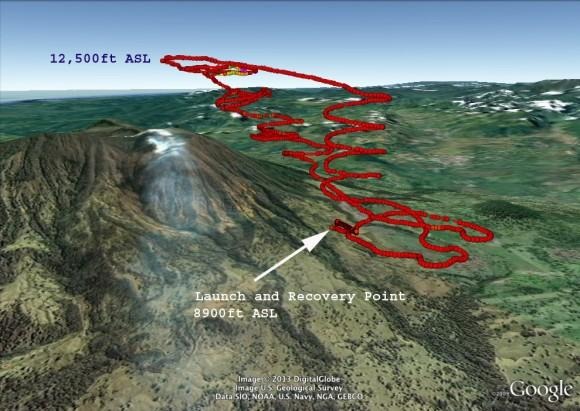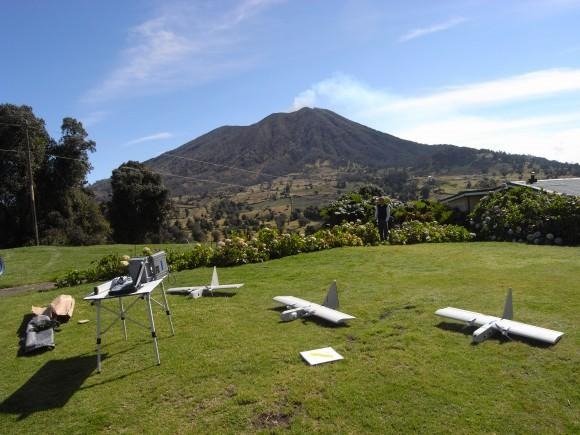NASA taps US Marines for Dragon Eye volcano flight
When NASA aims to hit a volcano to study its fabulous plumes of heated debris, they do it in style: with a set of Dragon Eye unmanned aerial vehicles. The mission NASA rolled with three Aerovironment RQ-14 Dragon Eye UAVs from the United States Marine Corps (USMC), these vehicles issued via the General Services Administration's San Francisco office. It was NASA's Ames Research Center, at Moffett Field, California that negotiated the transfer, and the Turrialba Volcano, near San Jose, Costa Rica, that they've flown over.
Each of these lovely little flyers is a 5.9-pound aircraft with twin electric engines and a 3.75-foot wingspan. They're each able to carry a one-pound payload that NASA chooses to fill with instrumentation that'll allow them to study the volcano. Each of these planes is able to carry this payload for up to one hour inside a volcanic plume – important to keep in mind as this mission acts as another example of how military might can be used for civilian science purposes – a definite positive!
The full study had 10 total flights between March 11th and March 14th (of this year, 2013), each of them reaching above approximately 10,500 feet above sea level along the rim of the Torrialba summit crater. Flights reached up to 12,500 feet ASL, more than 2,000 feet above the Turrialba summit – hot stuff!

NASA's Jet Propulsion Laboratory (JPL), Pasadena, California's own David Pieri, this project's principal investigator and a research scientist, noted the dangers of missions such as these.
""It is very difficult to gather data from within volcanic eruption columns and plumes because updraft wind speeds are very high and high ash concentrations can quickly destroy aircraft engines. Such flight environments can be very dangerous to manned aircraft. Volcanic eruption plumes may stretch for miles from a summit vent, and detached ash clouds can drift hundreds to thousands of miles from an eruption site." – Pieri
It's important to note that each of these flying craft are retired military tools, and that they're being used here to improve NASA satellite data as well as aviation safety in the end. Instrumentation aboard the craft included the following:
• USMC visible and infrared video cameras
• Sulfur dioxide and particle sensors
• Automatic atmospheric sampling bottles keyed to measure sulfur dioxide concentration

This same research center (Ames) will be working on this project with larger SIERRA unmanned aircraft as well, each of them working with what they characterize as a more sophisticated mass spectrometer so they'll be able to measure a whole new set of gasses pluming forth from Turrialba. These larger craft weigh in at around 400 pounds (takeoff weight) and have the ability to carry a 100-pound payload.
[via NASA]
